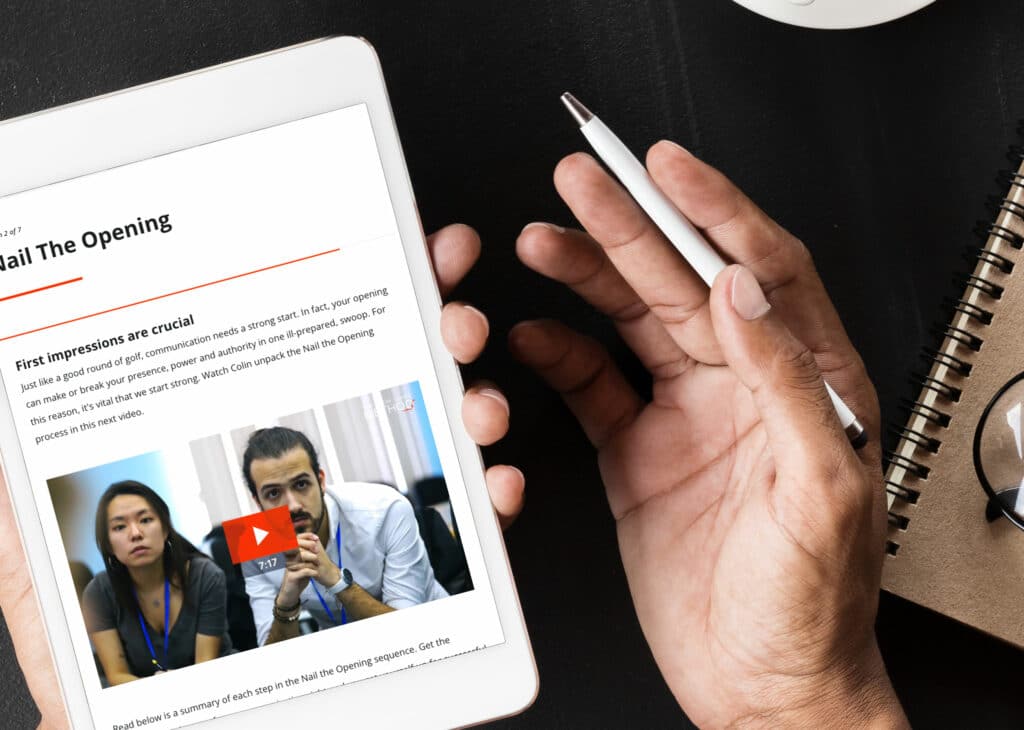It’s a brave new world for organisations all over Australia. The Fourth Industrial Revolution is here, and it’s fundamentally changing the way we do business. You’ve no doubt been hearing the phrase “digital transformation” being bandied about of late. Perhaps your organisation is in the throes of digital transformation already. But did you know your communication skills have the potential to make or break the uptake of digital transformation at your organisation?
Digital transformation is not simply about adopting new technologies; it’s about fundamentally changing the way you work, in all aspects of your business. In order for an organisation to truly transform, therefore, its employees need to be a key part of that transformation.
But change – particularly transformative change – can be scary, and people’s natural instincts will be to resist, to cling to the status quo. Overcoming this trepidation is essential to the realisation of digital transformation in your organisation. Your employees’ willingness to embrace it with open arms can mean the difference between a resounding success and a crushing failure.
So how do you get employees enthusiastic and motivated to undertake transformative change?
With advanced communication skills.
Here are the 4 things to remember when communicating digital transformation in your organisation.
1. Put your audience at the heart of your message
This is something we’re always touting, because it’s just so central to communicating for influence. And when it comes to communicating digital transformation, it is all the more important. After all, your employees are at the heart of digital transformation; it makes sense that they should be at the heart of your message too.
When starting to think about your presentation, an excellent place to start is with ‘why’:
- Why do they need to change, and why now?
- Why is digital transformation important to the organisation and to the employees?
- Why will it make their day-to-day easier?
Another way to put this is “What’s in it for them?” It’s crucial to have clear answers to these questions and to communicate these upfront. By putting yourself in their shoes, and thinking and speaking from their perspective, you immediately capture their attention, build engagement and establish authority. They’ll, therefore, be much more receptive to your message.
It’s also important to consider how to balance accountability with empowerment. In order for employees to effectively drive transformation, they have to feel empowered to do so, rather than simply being told it is their responsibility. Transformation is at its essence about breaking down silos and giving employees more agility and space to innovate, but at the same time, they need to be given parameters within which to work. Be clear about your expectations, what resources employees have at their disposal to achieve these expectations, and when and how they should report their progress.
It’s also crucial to ensure the conversation is two-way, and that employees are given time to ask questions and provide their input. As those at the coalface who will be driving the change, it is important they feel as involved in the process as possible.
2. Use language that inspires
When implementing digital transformation at an organisation, one of the biggest obstacles to overcome will be that of inertia. Simply put, getting an entire organisation to shift in a whole new direction is not an easy task. You need to inspire your employees to want to change.
This is not the time for the same old corporate speak. This is a time to use language in beautiful and unexpected ways, in order to grab the audience’s attention. Storytelling can also be a powerful way to engage with your audience on a fundamentally human level, appealing to their empathy and imaginations. A well-crafted story can move people in a way a slide packed with facts and figures can never do.
3. Develop a strong presence
Initiating digital transformation at an organisation is akin to steering a ship into uncharted waters. Now, imagine yourself as a crew member on that metaphorical ship. Which would you rather see: a captain who is hunched over the wheel, unsure about which course to take and struggling to keep his or her balance, or one who is standing upright, looking steadfastly ahead and steering confidently?
In the same way, the subtle cues you are giving off can make a world of difference in how your message is received. Your employees need to see a strong leader at the helm.
So stand tall, with your shoulders back and your feet grounded – this will help you project authority and confidence. You should also use open, considered and expansive gestures, which signal your willingness to embrace change as well as welcome input and collaboration.
Be mindful of the pace, pitch and projection of your voice as well, and use these to underline your message: speaking slowly and using a low tone at certain key points in a presentation will help you convey steadiness and gravitas, while varying your pitch can imbue more energy into your words, which may be more effective for a motivational section.
4. Pick the right delivery method
One aspect of digital transformation is that it inevitably changes the ways in which you communicate. You may, for example, be using collaborative tools with message boards or group chat features, or you may be teleconferencing or videoconferencing on a more regular basis.
While it’s good to be seen embracing these technologies yourself, be aware of the fact that they can dilute your impact, so when you’re delivering imperative information about your mission, vision or big changes, it is preferable to do these face-to-face. Ensure the delivery method suits the circumstances and needs of both you and the receiver(s).
Don’t get left behind
In order to keep up in today’s fast-changing landscape, digital transformation is imperative. By putting your employees at the heart of your message, using inspirational language, having a strong presence and using appropriate delivery methods, you can go a long way in getting employee buy-in, and taking that first step towards organisational change.
Stories are one of the most powerful tools of influence in your communication arsenal. To learn how to use them to maximum effect, download our free ebook What’s the Story: How to use storytelling in business to engage, persuade and influence at work now.

The Colin James Method® Facilitators train corporate executives to improve their professional communication skills with a proven methodology. Our highly trained Facilitators and Coaches are recognised for their experience in their fields and have worked with many individuals and organisations around the world to master the art of communication.











